The success of any organization today lies heavily on employee satisfaction and knowing how to measure employee satisfaction, taking action accordingly with the insights. Employee satisfaction is so much more than just a buzzword but rather represents a direct metric of how productive your organization can actually be.
Understanding what employee satisfaction is and recognizing it as the invaluable metric it is for the success of an organization in the long term is crucial to the survival of any entity. By definition, employee satisfaction is how happy your workforce truly is, and yet it impacts the organization at every level, whether it be productivity, efficiency, retention, or turnover, which is why it is so important to be able to measure it.
Without the ability to measure employee satisfaction, organizations are likely to stay in the dark about the actions they can take to make sure they are on course to their objectives and strive to achieve them sustainably. So let’s dive straight in and take a look into what specific metrics you need to focus on and how you can measure them!
Table of Contents
5 Employee Satisfaction Metrics to Track
Employee satisfaction metrics will provide you with a solid pain point if you will to identify which areas need to be worked on to improve the health of your organization as a whole, or if you’re already doing well, then what you need to keep doing to sustain your status quo. Let’s take a look at a few!
1. Absenteeism Rate
The absenteeism rate is a metric used to measure the absences of employees within a specific period in order to understand how present the workforce really is. The way to go about calculating it is by dividing the number of days absent by the total number of available workdays, then multiplying by a hundred to get the rate.
If your absenteeism rate is high, that can indicate underlying issues like low employee motivation, health issues, or poor workplace conditions. By recognizing these problems, you can move forward with actionable plans to solve the root cause. This way the organization can avoid extra costs due to overtime, temporary replacements, or decreased productivity.
2. Employee Turnover Rate
Employee turnover rate represents the percentage of employees who leave the organization in a certain amount of time. You can calculate the turnover rate by dividing the number of employees who left by the average number of employees and then multiplying it by a hundred.
Same with the absenteeism rate, if your turnover rate is on the higher side, it may mean issues within your organization that suggest problems regarding employee morale, management practices, or company culture, which will inevitably be a costly experience for any organization.
3. Employee Net Promoter Score
The employee net promoter score, on the other hand, measures an employee’s loyalty and their likelihood of recommending their workplace to others. Adapted from the net promoter score which regards customer satisfaction, eNPS gives insight as to employee engagement.
To calculate, employees are asked the simple question, “On a scale from 0 to 10, how likely are you to recommend our company as a place to work?”, and according to their answers promoters (score9-10), passives (score7-8), and detractors (0-6) are determined. Depending on the rate at which the organization receives each group, it is possible to gain an understanding of where the organization stands.
4. Employee Engagement Survey Scores
Employee engagement surveys offer a clear and quantitative measure that reflects employee engagement levels in an organization. These scores are derived from surveys with specific questions on job satisfaction, work environment, management, recognition, and other metrics that represent an employee’s happiness.
Through these questions employees can provide the organization with clear insights into which parts of their morale are high or low, giving clear instructions on areas of improvement that organizations can look into.
5. Employee Satisfaction Index
Employee satisfaction index is a comprehensive metric that provides an overall assessment. Similar to the employee engagement surveys, the employee satisfaction index provides questions on several aspects of work-life in an organization and provides insight through them.
The employee satisfaction index is a valuable metric since it can provide a holistic view of satisfaction in an organization, which can be utilized to identify strengths and weaknesses, track satisfaction changes over time, and benchmark against industry standards.
How To Measure Employee Satisfaction?
The best way to measure employee satisfaction and keep on top of all of your data regarding it is to utilize the right software. In this case, there is no better tool to implement in your work life than Teamflect!
Teamflect is an all-in-one performance management solution inside Microsoft Teams, designed specifically for accessibility and seamless integration. Let’s explore how you can utilize Teamflec in your favor!
1. Employee Satisfaction Surveys
Employee satisfaction surveys are a valuable tool that no organization can afford to overlook. That is why it is very important to have the right tool that you can implement in your work life seamlessly and use real-time insights to better your experience.
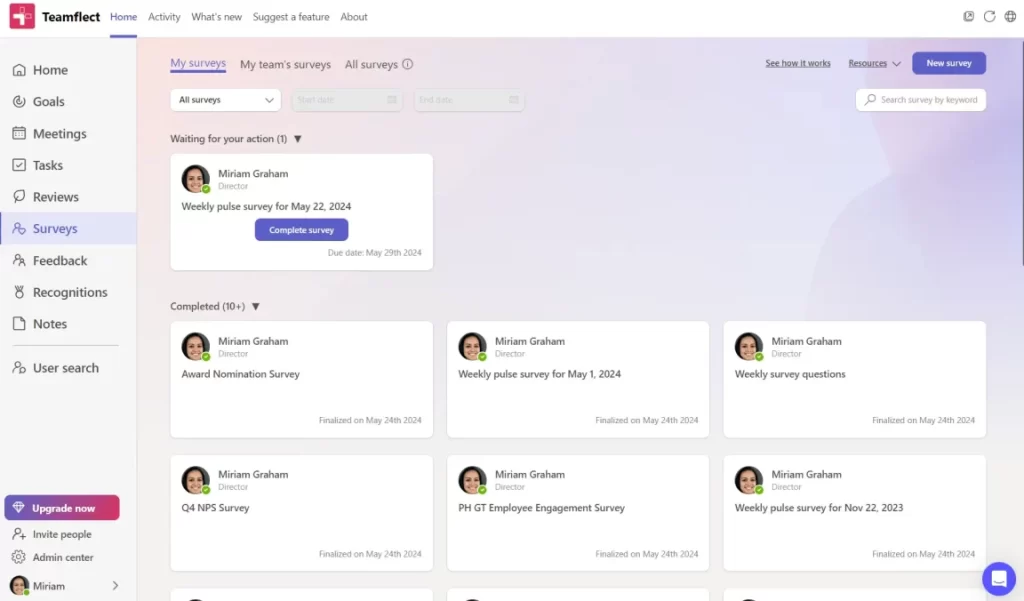
To create a satisfaction survey, go to the Teamflect surveys module and simply click on the new survey button in the upper right-hand corner to create your survey. Once created you will be able to reach all your surveys inside the module’s main page.
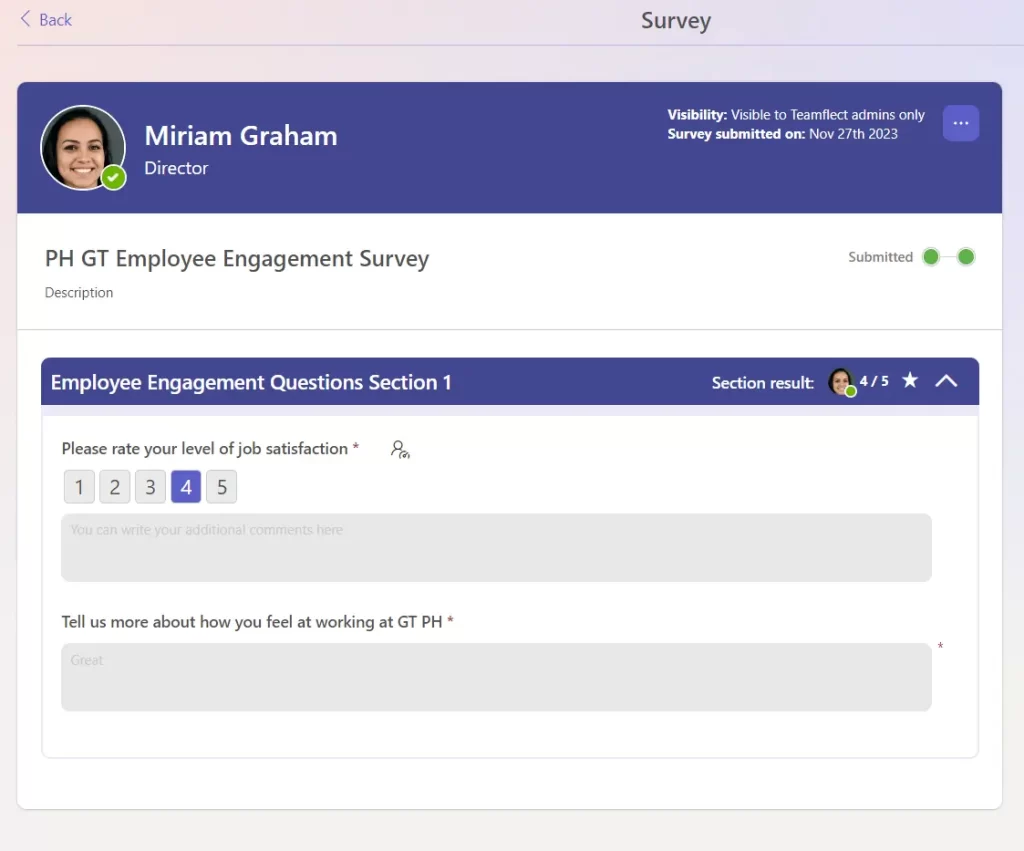
From there, just fill let your team fill out the survey so you can collect the necessary data to gather your insights!
2. Employee Net Promoter Score Surveys
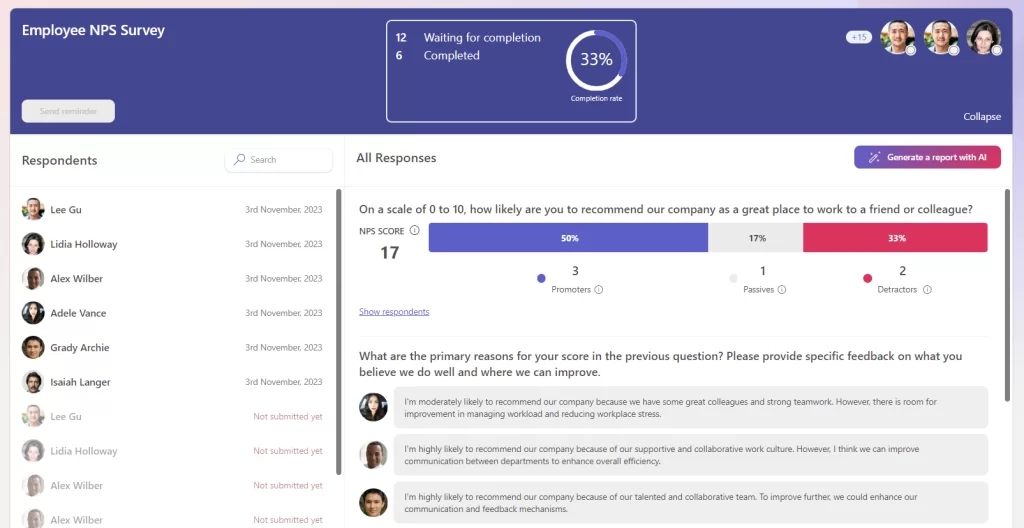
As well as all the different ways you can create surveys and customize your feedback experience with Teamflect and how you can measure employee satisfaction inside Microsoft Teams, you can also create employee net promoter score surveys.
Knowing if your team would recommend your organization as a great place to work is one of the best ways to measure employee satisfaction. These employee net promoter score survey results can be analyzed with AI.
3. Regular One-on-One Meetings
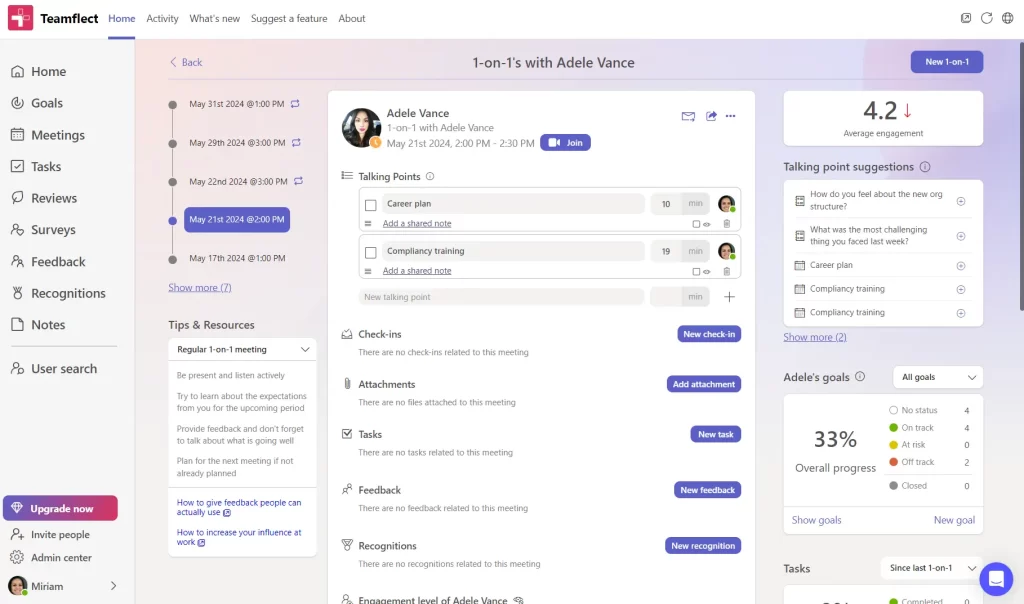
Another way you can measure employee satisfaction with Teamflect is by using the meetings module, specifically your one-on-ones.
As with all of our modules, we’ve made sure to link your employees’ related goals, tasks, and surveys inside the one-on-one meetings so you can conveniently reach all the necessary information you need at any time.
4. Quick Pulse Surveys
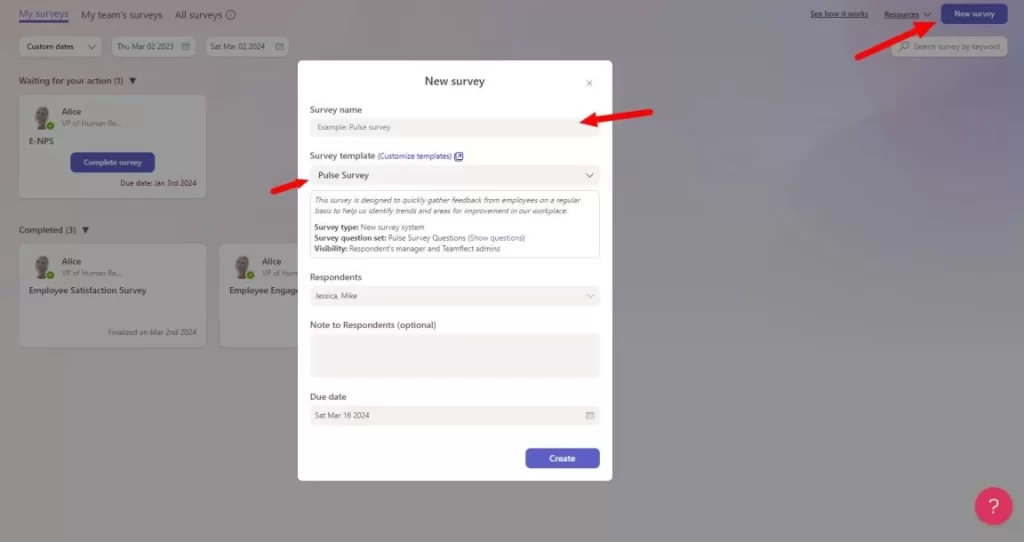
Similar to engagement surveys you can also customize the surveys you send out to your team in the form of pulse surveys! Pulse surveys can be a powerful tool to get feedback more consistently so you can make adjustments more fast-paced.
Employee Satisfaction vs Employee Engagement
Employee satisfaction and engagement are two different yet related concepts, intertwined even. Employee satisfaction refers to how content and fulfilled the workforce is. On the other hand, employee engagement refers to more than mere satisfaction but rather reflects the emotional commitment and connection of the employees.
Engaged employees are more than simply satisfied employees. They are not only content with the organization but can go the extra mile to be present on several levels, such as contributing to discussions, actively promoting the organization, and going beyond their job descriptions.
In this sense, while satisfaction is a valuable part of employee well-being, engagement is a much more dynamic aspect of organizational success in the long term. Hence, even though both metrics are essential, organizations should strive to cultivate more than just satisfying their employees but make sure they are engaging.
Benefits of Measuring Employee Satisfaction
There are several benefits to measuring employee satisfaction;
- Increased Retention: Satisfied employees are that much more likely to stay in an organization therefore increasing retention and avoiding costs of extra recruitment, training, and lost productivity.
- Enhanced Productivity: Happier employees will be more engaged and hence more productive which is inevitably going to contribute to the organization’s long term success and its sustainability.
- Improved Customer Satisfaction: If the workforce of an organization is satisfied and engaged, they are that much more likely to put forth their best work and go the extra mile, which in return will keep customer much more happier as well.
- Attracting Top Talent: A positive reputation illuminated through happy employees and satisfied customers is likely to attract talent of the best kind and the creme de la creme of your industry, making your workforce one of the most competitive out there.
- Organizational Growth: As you continuously monitor employee satisfaction and go through the motions of improving circumstances, you’ll be promoting a cycle of continuous growth in the process, contributing to your organization’s development in the long term.


